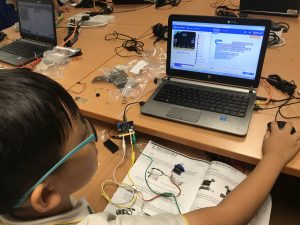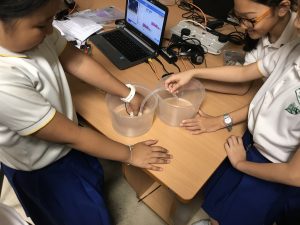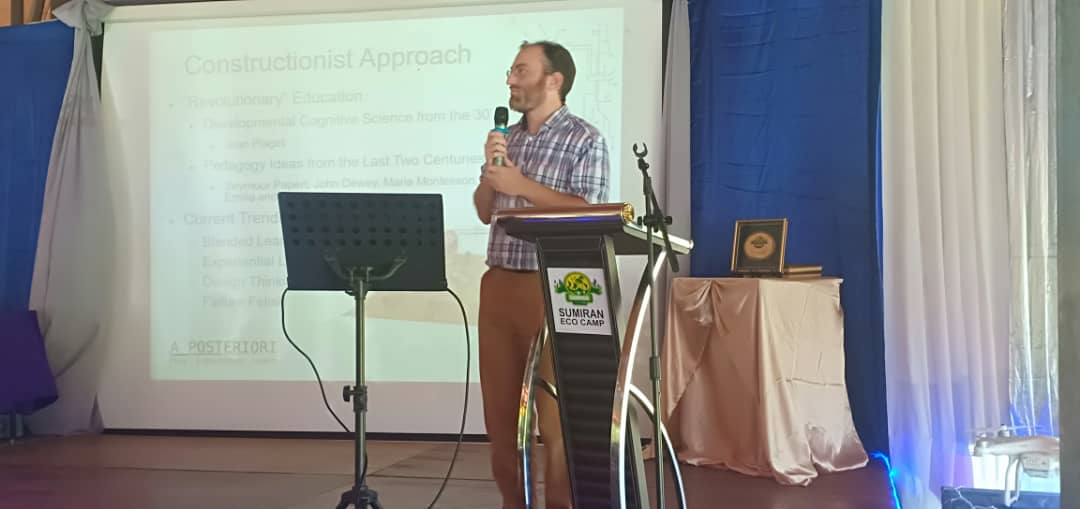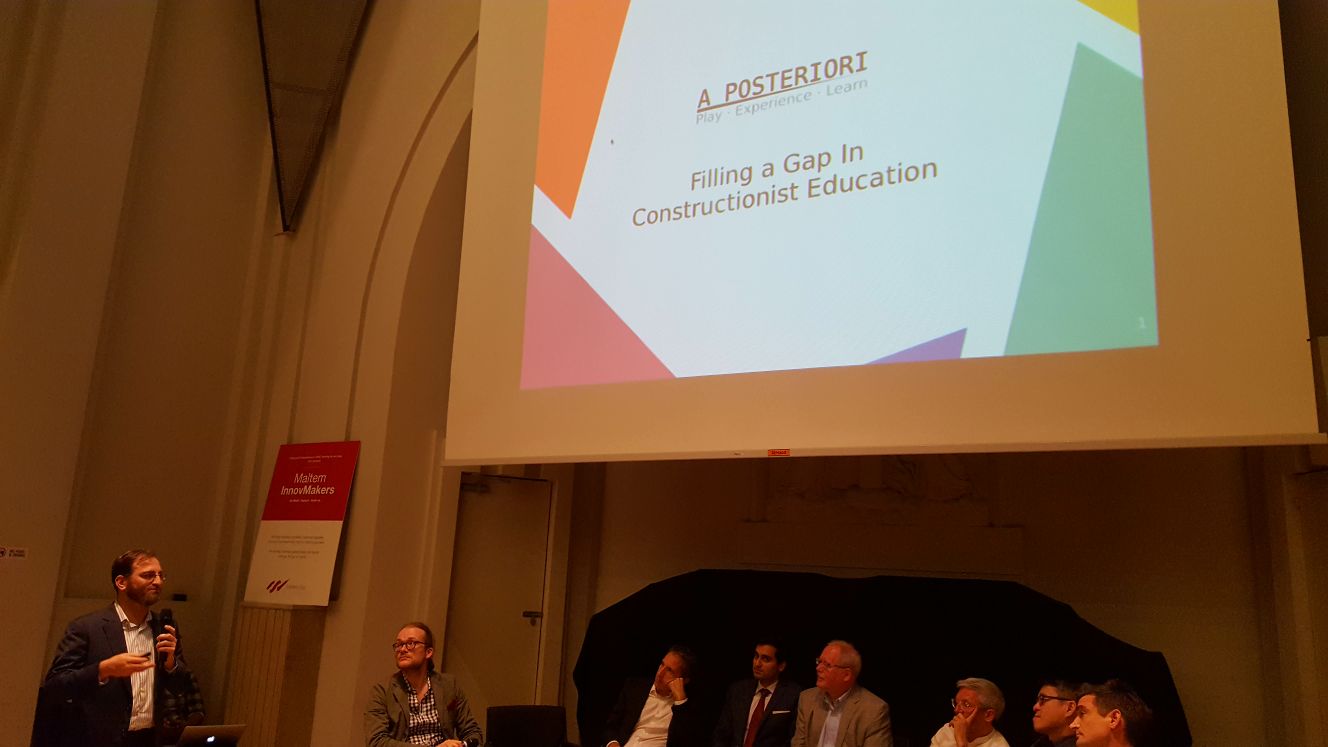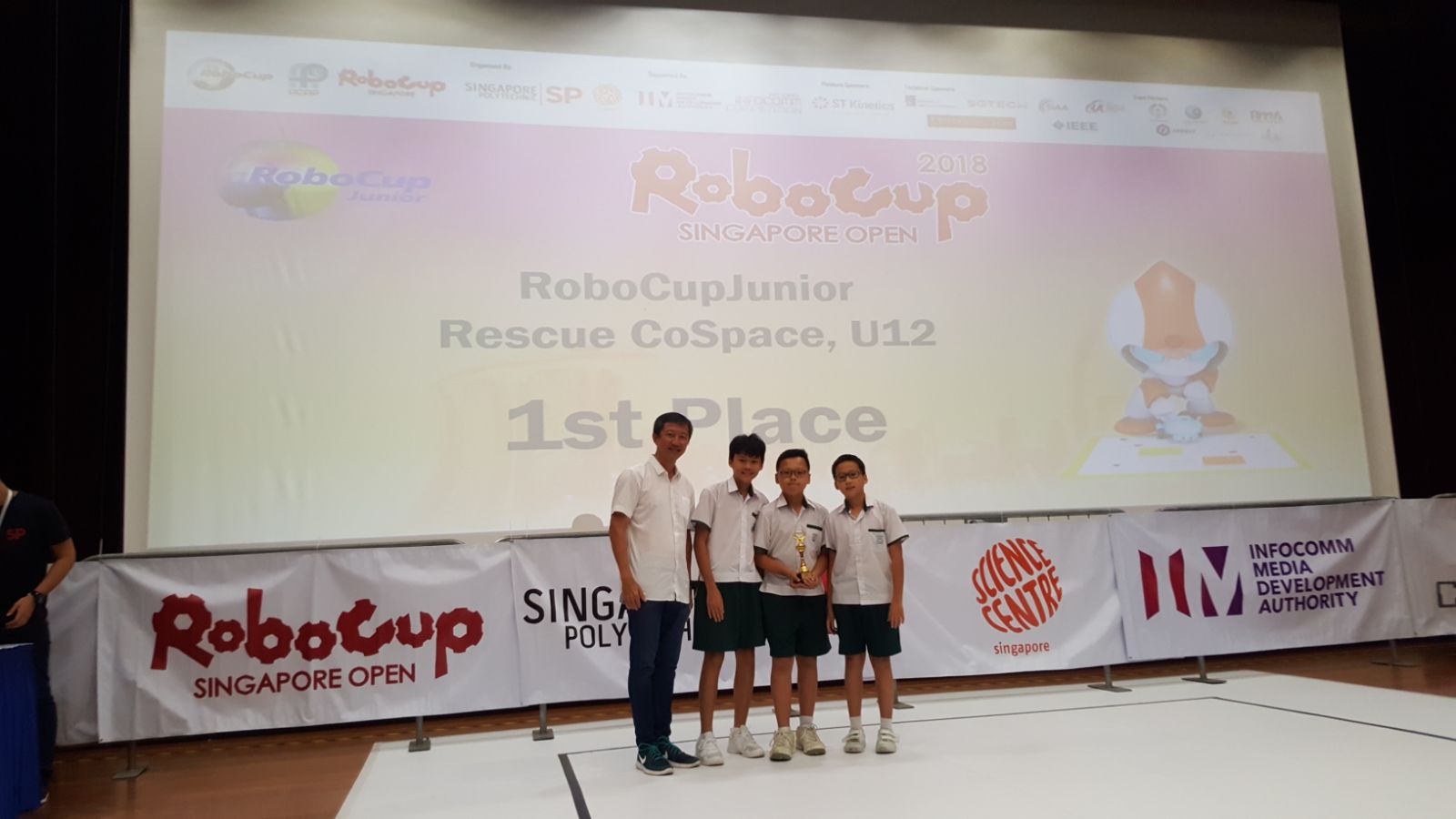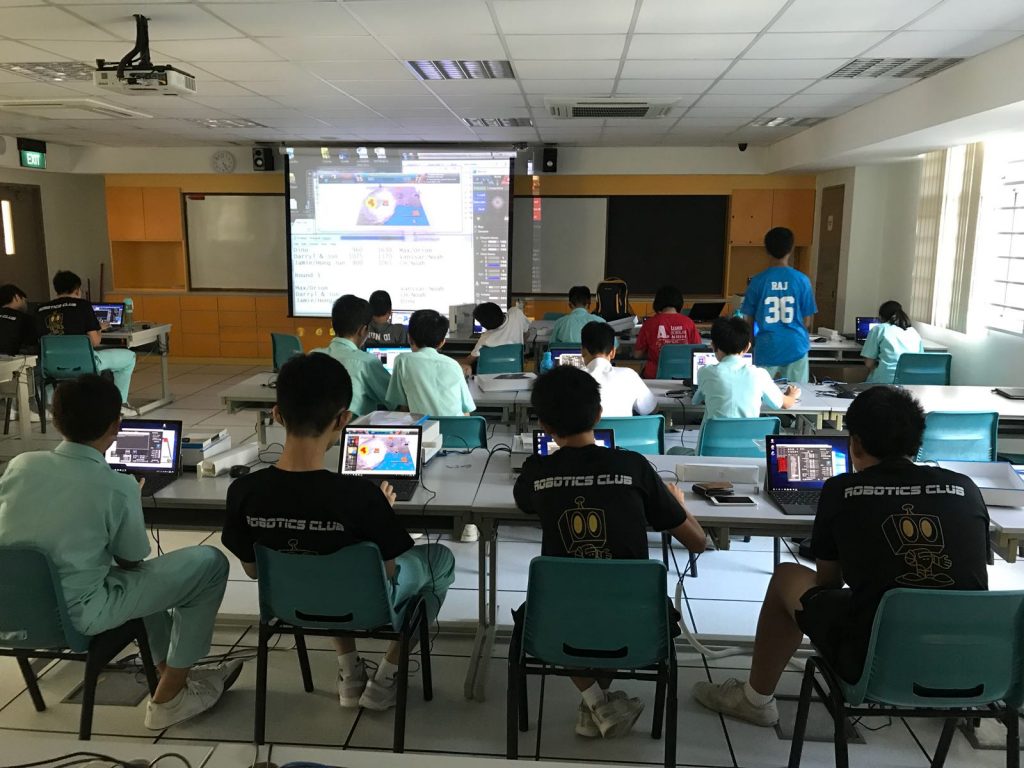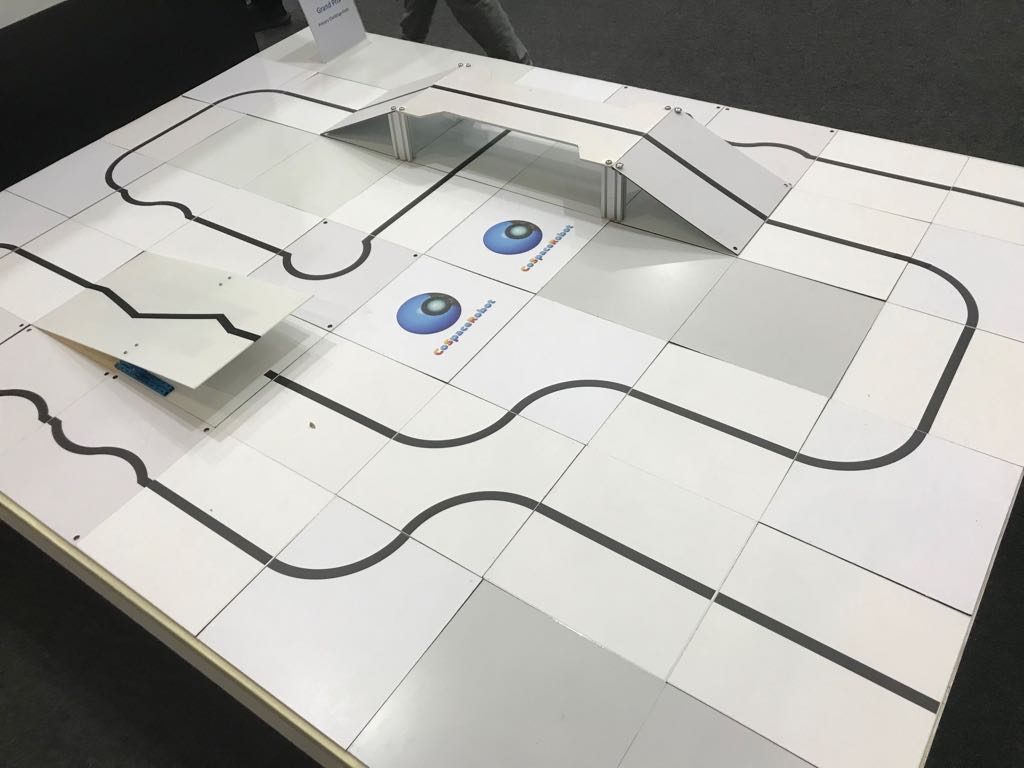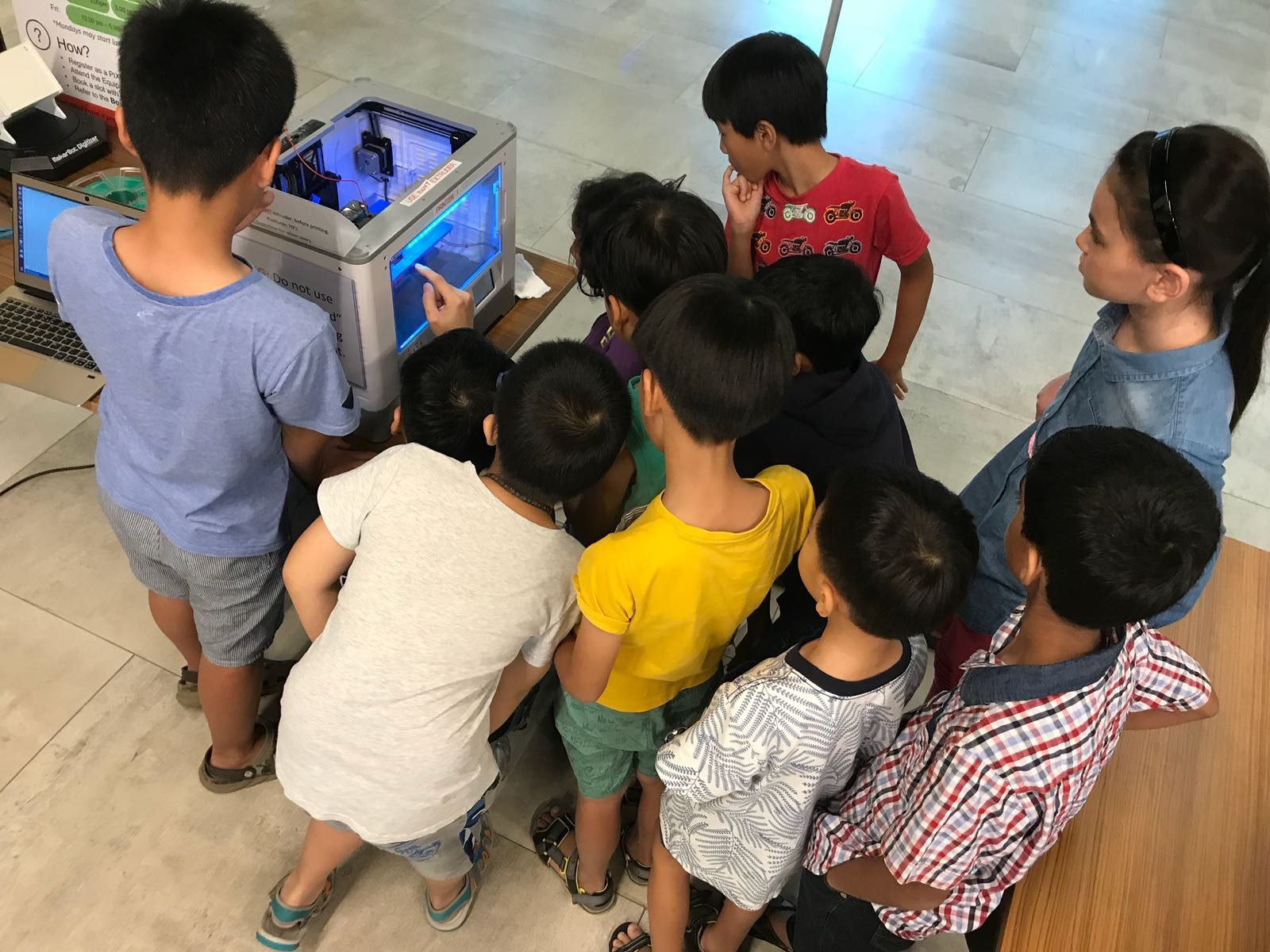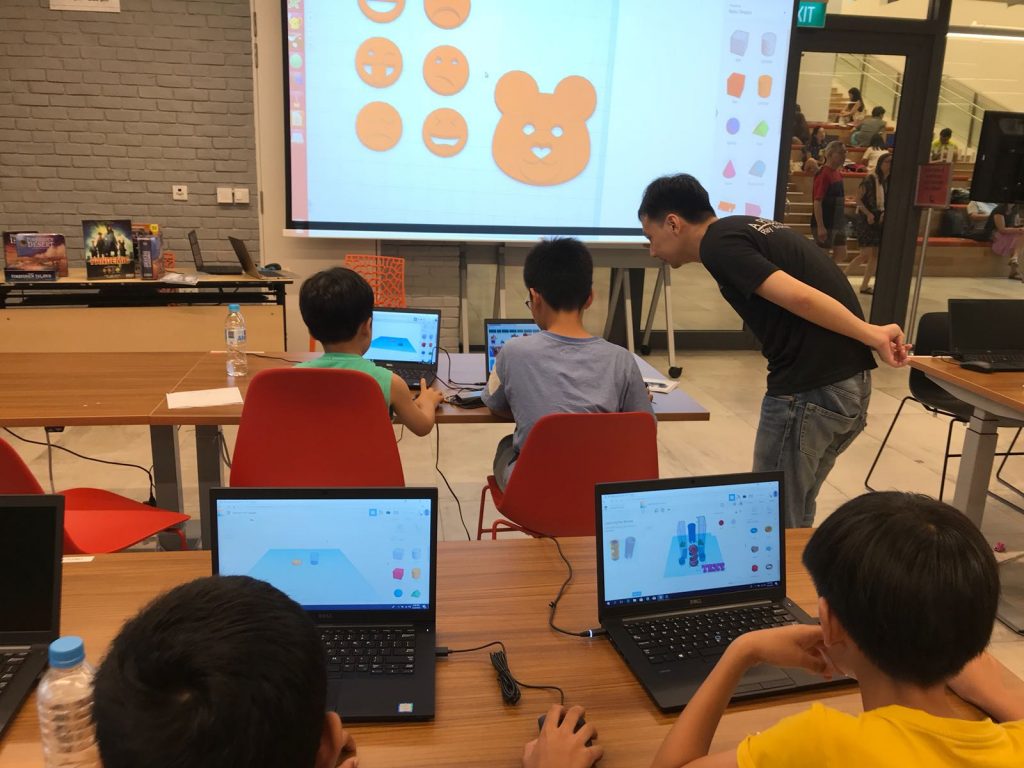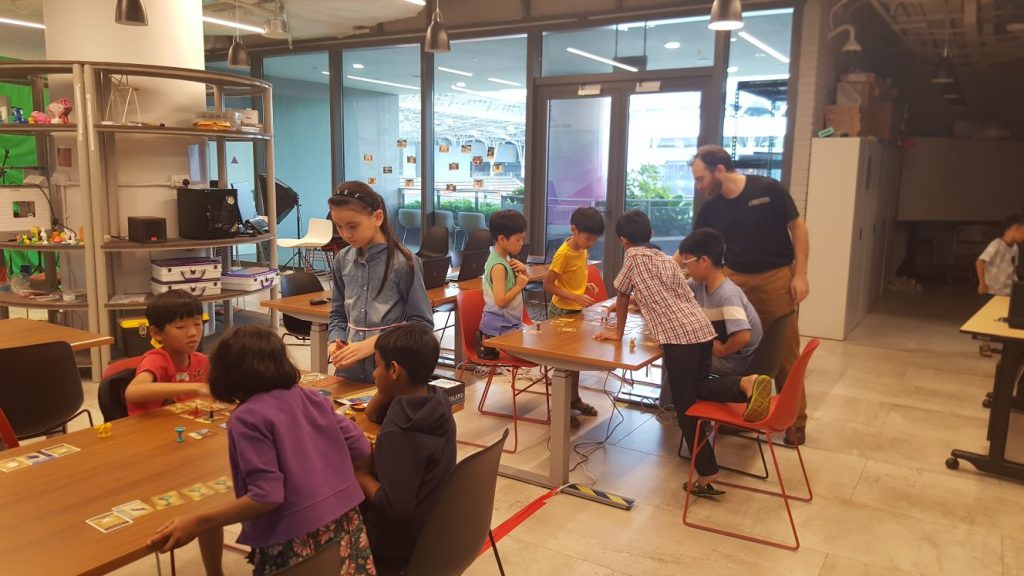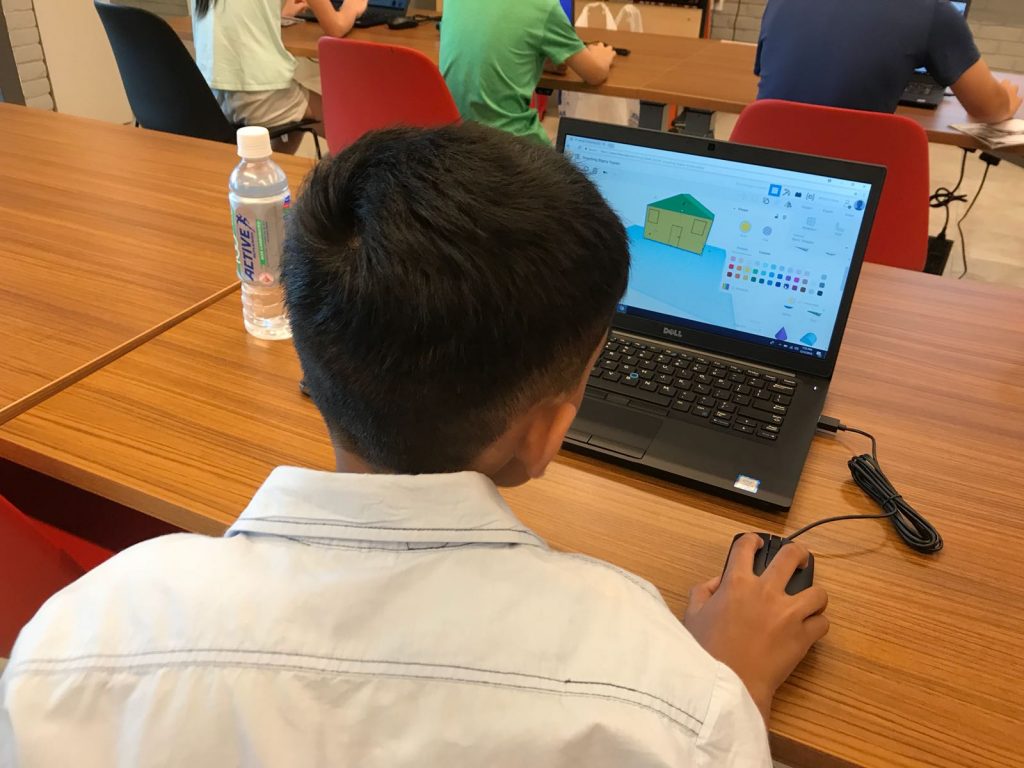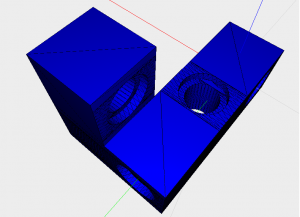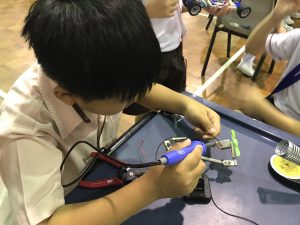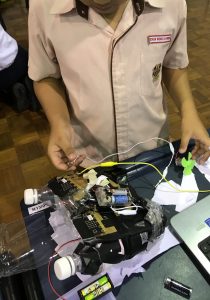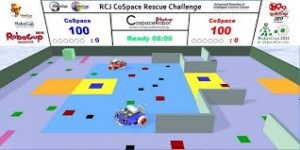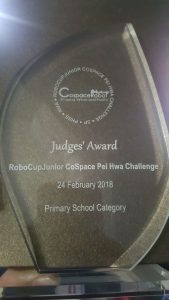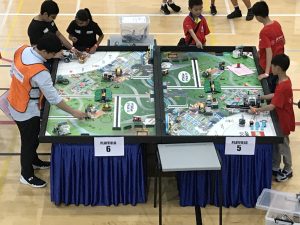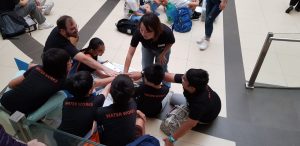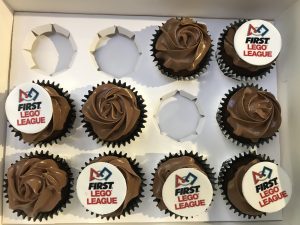Nan Hua Primary Infocomm & Media CCA hired us to teach a Drone Flight School & Coding curriculum for one semester. The club had 7 Mambo drones and 15 iPads with Tynker app installed. Tynker is a Scratch-based block programming educational app, with built-in Mambo drone support via Bluetooth.
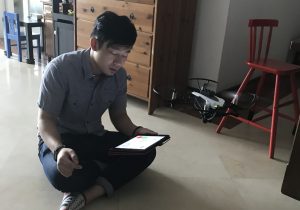
Tynker’s block API for Mambo was fairly limited. Liftoff, Land, Move Up, Move Down, Forward, Backward, Turn # of Angles Clockwise, Counter-Clockwise, etc. Not much sensory information, no real-time feedback accessible to Tynker API or the programmer. At first, we were worried we wouldn’t be able to teach this limited API for a whole semester, but we brainstormed a fun-filled, experiential-based, challenge-framed set of lessons that exercise fundamental computing, drone flight basics, aerial photography, animation, and other topics.
Lesson 1
Flight School: basics of drone control system, flight controls, yaw/roll/pitch, etc.
Lesson 2
Obstacle Course Challenge 1: hoops, over and under desks, etc
Lesson 3
Obstacle Course Challenge 2: teams challenge each other in a duel
Lesson 4
Custom Controller: code your own flight controller with controls for funky movements like corkscrew lift, flying in a circle always pointing at center, aerial acrobatics, etc
Lesson 5
Search & Rescue: Obstacle Challenge enhanced with the Mambo’s Grabber accessory for more complicated missions
Lesson 6
Capture the Flag: Use aerial photography to capture shots of secret hiding places of the enemy team. Retrieve material intelligence data first to win.
Lesson 7
Dance, Dance, Revolution: choreograph a band of drones to fly in an eye-capturing pattern
Lesson 8-12
Mixed Media: Now it’s time for everyone to work together. Choreograph a mixed media show with drones, animation, and music.
Lessons 8-12 were our original intention for the program’s finale, but now we are involving the club in the new Drone Odyssey Challenge, a Science Center-sponsored, Parrot Mambo coding competition for Primary and Secondary school students. Just in time!
Our company is flexible in the ways we work with our clients. We build our relationship with school teachers and administrators on trust and shared passions towards the students’ well-being, enjoyment, and maximal learning potential. We have no problems with changing course, augmenting our curricula, and delivering new topics with different instructors chosen for optimal outcomes. Our trainers are imbued with the confidence and the knowledge to lead a complex CCA, a short module, or a single unit workshop where a prepared slide show, or a prescribed curriculum, may or may not be the right fit for the job at hand. We think fast on our feet, using our intuition and skills, to get the best job done. That’s a way of working we would like to instill in the students as well, so why not be the role models they so desperately need…
